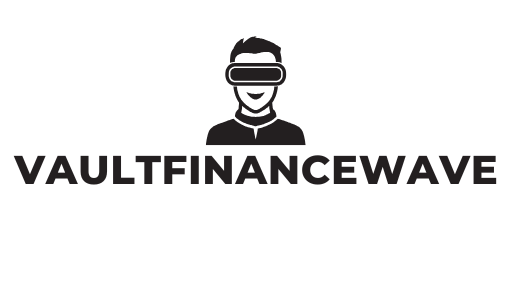Table of Contents
ToggleIn today’s fast-paced digital world, effective communication is more crucial than ever. With the rise of social media, instant messaging, and video conferencing, the way people connect has transformed dramatically. Digital communication reviews play a vital role in understanding these changes, offering insights into the tools and platforms shaping modern interactions.
These reviews not only evaluate the effectiveness of various communication technologies but also highlight trends and user experiences. By examining the strengths and weaknesses of different digital channels, individuals and organizations can make informed decisions about how to enhance their communication strategies. As the landscape continues to evolve, staying informed about the latest developments in digital communication is essential for success.
Overview of Digital Communication Reviews
Digital communication reviews evaluate various platforms and tools such as social media channels, messaging apps, and conferencing software. They analyze features, usability, and user satisfaction across these platforms. Digital communication reviews emphasize the effectiveness of communication methods to identify which tools enhance productivity and engagement.
Reviews highlight the strengths and weaknesses of each tool, providing crucial insights. For instance, a review of video conferencing software may address video quality, ease of use, and cost-effectiveness. By compiling user experiences and expert analyses, these reviews create a comprehensive overview, allowing users to gauge which platforms meet their specific needs.
Staying informed about the latest digital communication reviews ensures individuals and organizations select the most suitable tools for their objectives. Regularly updated reviews offer a clearer understanding of emerging trends and technologies in digital communication. Monitoring such developments proves essential for fine-tuning communication strategies and enhancing interaction quality.
Importance of Digital Communication

Digital communication plays a vital role in modern interactions, shaping how individuals and organizations connect and share information.
Enhancing Connectivity
Enhancing connectivity signifies the improved ability to engage with others across distances. Digital communication enables real-time interactions through platforms such as social media and messaging apps. It facilitates the formation of networks that transcend geographic boundaries, allowing individuals from different regions or backgrounds to communicate effortlessly. Effective connectivity allows businesses to reach global audiences, fostering collaboration and networking opportunities.
Facilitating Information Exchange
Facilitating information exchange is crucial for timely decisions and knowledge sharing. Digital communication tools provide instant access to information, allowing users to share ideas, documents, and updates quickly. Platforms like video conferencing and collaborative software enable seamless discussions, promoting efficient workflows. This rapid exchange of information supports innovation and problem-solving, leading to improved product development and customer service. By leveraging these communication tools, organizations can ensure that crucial information flows freely within teams and with external stakeholders.
Key Platforms for Digital Communication
Digital communication relies on various platforms that facilitate interaction and collaboration. Understanding these platforms helps individuals and organizations choose the right tools for their communication needs.
Social Media
Social media platforms serve as vital tools for engagement and outreach. Platforms like Facebook, Twitter, LinkedIn, and Instagram enable users to share content, interact with audiences, and build communities. Each platform offers unique features, such as targeted advertising on Facebook or professional networking on LinkedIn, which cater to different communication goals. Additionally, real-time updates and feedback mechanisms enhance participant interaction, fostering more dynamic discussions. Reviews of social media platforms analyze user experience, engagement metrics, and content effectiveness, guiding organizations in choosing the most beneficial channels for their target audiences.
Email and Instant Messaging
Email and instant messaging applications provide instant and direct communication options. Email remains essential for formal communication, documentation, and information exchange within organizations. Applications like Gmail and Outlook offer features such as organized folders, filtered searches, and integrated calendars to enhance user experience. Instant messaging tools like Slack, Microsoft Teams, and WhatsApp enable real-time conversations, promoting quick decision-making and collaboration. These platforms often include features like channels, file sharing, and integration with other tools to streamline workflows. Reviews of these communication tools focus on usability, integration capabilities, and user satisfaction, assisting users in selecting the best options for efficient communication.
Trends in Digital Communication
Current trends in digital communication reflect the rapid evolution of technology and user preferences. Key developments include the rise of video communication and the impact of artificial intelligence across various platforms.
Rise of Video Communication
Video communication has gained prominence, transforming engagement methods. Tools like Zoom, Microsoft Teams, and Google Meet enable face-to-face interactions, fostering rapport despite geographical barriers. Businesses leverage video communication for remote work and virtual meetings, enhancing collaboration and efficiency. A report by MarketsandMarkets indicates that the video conferencing market is projected to reach $9.2 billion by 2027, emphasizing its growing significance. User reviews often highlight features such as screen sharing, breakout rooms, and integration with other applications as vital for enhancing the meeting experience.
Impact of Artificial Intelligence
Artificial intelligence (AI) significantly influences digital communication strategies. AI-powered chatbots, for example, provide real-time customer support, reducing response times and improving user satisfaction. According to a survey conducted by Salesforce, 69% of consumers prefer using chatbots for quick answers. AI also assists in content creation, helping marketers tailor messaging effectively. Reviews of AI communication tools emphasize their efficiency and user-friendly interfaces, making them accessible for organizations of all sizes. Furthermore, AI enhances analytics, enabling companies to understand audience behavior and optimize communication strategies based on data-driven insights.
Challenges in Digital Communication
Digital communication faces various challenges that can hinder its effectiveness. Two prominent issues include privacy concerns and information overload.
Privacy Concerns
Privacy concerns pose significant challenges in digital communication. Data breaches and unauthorized access to personal information can lead to identity theft and financial loss. Many communication platforms collect user data, making it crucial for organizations to communicate transparently about data usage. Users often hesitate to engage with tools lacking robust privacy policies. According to the Pew Research Center, around 81% of Americans feel they have little to no control over the data collected about them. Organizations must prioritize data protection and establish trust with users by implementing strict security measures and adhering to regulations like GDPR.
Information Overload
Information overload presents another key challenge in digital communication. The massive volume of messages, notifications, and emails can overwhelm users, leading to decreased productivity and increased anxiety. Research from the University of California indicates that multitasking, such as managing multiple communication platforms simultaneously, can reduce a person’s efficiency by up to 40%. To combat this, users and organizations should establish clear communication protocols, prioritize messages, and encourage the effective use of tools. Implementing features like focused inboxes and notification settings can also help minimize distractions, promoting a more streamlined communication experience.
Digital communication is reshaping how people interact and collaborate in today’s fast-paced world. By leveraging digital communication reviews, individuals and organizations can navigate the vast array of tools available. These reviews not only highlight the strengths and weaknesses of various platforms but also provide valuable insights into user experiences.
Staying updated on the latest developments in digital communication is essential for optimizing strategies and enhancing connectivity. As technology continues to evolve, being informed allows users to make educated choices that foster effective communication. Embracing these insights will ultimately lead to improved productivity and engagement in both personal and professional settings.




